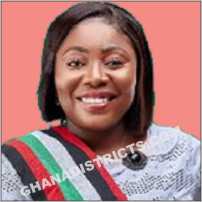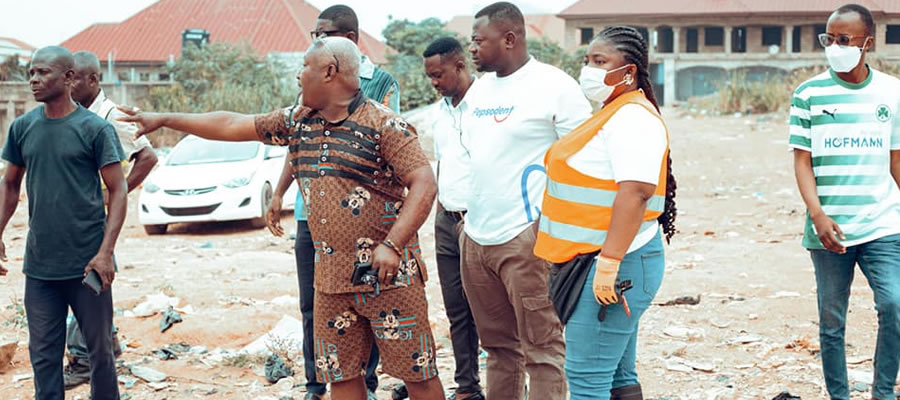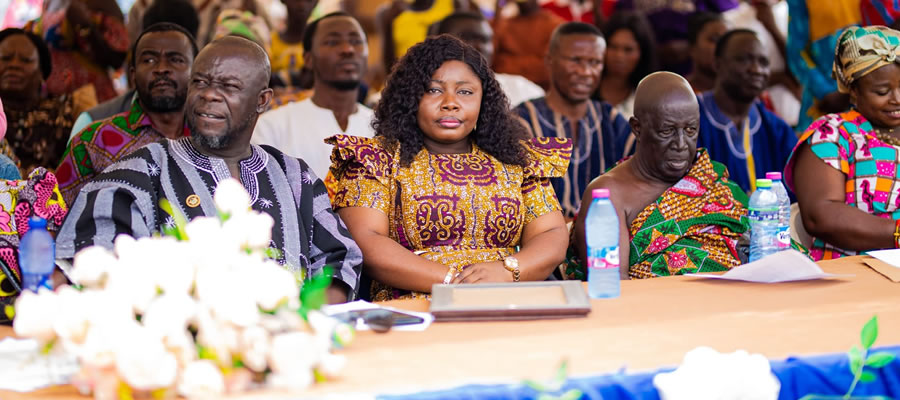

A community durbar was held in the communities to seek for their development needs/ gaps and issues. The under listed is the issues identified during the durbar:
- Poor access to credit facilities
- High youth underemployment and unemployment
- Low market for agricultural production
- Poor enforcement of rules and regulations
- Low productivity of agriculture produce
- Incidence of land degradation
- Inadequate provision of potable water
- Inadequate sanitation facilities
- Changes in climatic conditions
- Inadequate recreational facilities
- Poor housing conditions and property addressing system
- Inadequate power supply
- Poor condition of feeder roads
- Frequent accidents on highways
- Inadequate access to ICT education
- Inadequate educational infrastructure
- Poor maintenance culture
- Inadequate health facilities and personnel
- inadequate support for the physically challenged
- Poor land management and administration
- Ineffective supervision of schools
- Dwindling of communal spirit
- Ineffective local governance structures
- Frequent cases of insecurity in some communities
- Lack of entrepreneurial skills for the youth
- Absence of school feeding programme for some schools
- Inadequate agriculture extension officers
- Lack of scholarship schemes for the needy but brilliant students
- Inadequate market facilities
Vulnerability Analysis
The Department of Social Welfare, under the auspices of the District Assembly, has formed a child panel committee with legal backing which seeks to protect women and juvenile issues. The committee which sits once a week has a composition of a cream of members drawn from both the District Assembly and other important personalities from the district. Cases like child abuse, neglect, and others are heard and solutions found to them by the committee.
Again, to protect the rights of inhabitants, the Department of Social Welfare in conjunction with the District Assembly and some donor agencies have formed legal aid groups with members scattered all over the district. The group seeks to promote individual rights by encouraging individuals to report infringement of their rights to the appropriate quarters. On some occasions, these groups take up cases of the under privileged to the appropriate quarters.
HIV and AIDS is also a major concern in the district. Currently data from the Ghana Health Services indicate that more than 1334 people are receiving post test counseling. This means that effort must be intensified to curb the menance of HIV and AIDS through counseling and other programmes.
Special programmes should be implemented to lessen the burden of HIV and AIDS on People Living with HIV and AIDS (PLHIV) and subgroups as children orphanaged or made vulnerable by HIV and AIDS.
Table1.27: Employment Status of the Vulnerable Groups
Disability | Employed | Unemployed | Students
|
Moving | 107 | 243 | 23 |
Hearing and Speaking | 11 | 21 | 21 |
Hearing | - | 2 | 2 |
Speaking | - | 1 | 1 |
Seeing | 4 | 6 | 2 |
Epilepsy | 4 | 1 | - |
Handling | 1 | - | - |
Learning | - | - | 7 |
Leprosy | - | - | - |
Total | 127 | 377 | 54 |
Source: Department of Social Welfare Report, 2013
The data revealed that a total of 127 person representing 22% of the vulnerable were employed. This implies that, more effort should be geared towards the creation of jobs for the vulnerable so that they do not become beggars/ burden in the society.
Disability Fund
As part of government policy to ensure that person with disability do not become a burden in the society, the disability fund was been established. The fund is 2% of the district assembly common fund set aside to cater for persons with disability.
In the district, the District Fund Management Committee is charge for ensuring the disbursement of the disability fund. However, in 2013, the disability fund was been disbursed to seventy six persons and two disability and two organisations with disability. These include the Afigya Kwabre Association of Deaf and Afigya Kwabre Association of Disabled.
Table 1.28: Disbursement of Disability Fund
Gender | Specific Classification | ||
Male | 37 | Assistive device | 4 |
Female | 39 | Economic activities | 46 |
Educational
| 26 | ||
Total | 76 | Total | 76 |
Source: Department of Social Welfare Report, 2013
From the Table 1.28 above, it could be realized that the disability fund has been effectively disbursed/ utilized to support persons in schools, those engaged in economic activities and also assistive devices such as crutches etc.
However, the implication is that, it would help raise the living standard of the persons with disability and also reduce the burden on the society.
Gender Analysis
The total population of the district is estimated at 158,653 in the year 2014. The total population of males is 6,350 as against females of 69,790. Females therefore form 51.3% of the total al population. This by implication means that any conscious effort made to develop the well being of the people should be all embracing with the participation of both sexes in the development of the district. However since females are usually underprivileged in the socio-economic activities, special programmes needs to be implemented to increase women participation in the development process. The educational male and females parity index is very favourable at the primary and JHS levels. In fact, the parity is almost 1:1 at this level.
However the rates become unfavourable to females at the secondary and tertiary levels. Here, special programmes needs to be implemented to sustain females in school at higher levels of education.
Female participation in the political process is also very limited. At the district Assembly level, the total of males is 57 as against 6 for females. Conscious effort should be made to motivate females to participate fully in decisions that affect their daily lives. These include participating in political elections and appointments.
Composite Poverty Map
The composite poverty map depicts the various poverty pockets in the district. Four segments were identified after the derivation of the district composite map (see Figure 1.21).
To arrive at the district composite map, the following characteristics of the various pockets were considered.
- Potentials (resources available, skills etc).
- Accessibility to facilities and services.
- Major economic activities.
- Peculiar characteristics (e.g. Homogeneity, Heterogeneity Cultural/Religion etc.).
- Poverty issues/constraints.
- Development problems (what is keeping them in poverty)
The poverty pockets identified include the North-Western and North-Eastern corridors of the district. These areas are characterized by the following;
- The concentration of food crop farmers
- The presence of aged cocoa farms
- The inhabitants are mostly tenant farmers
- Limited access to socio-economic facilities
- Low household incomes
Figure 1.21: Composite Poverty Map
Date Created : 11/14/2017 7:21:25 AM












 facebook
facebook
 twitter
twitter
 Youtube
Youtube
 +233 593 831 280
+233 593 831 280 0800 430 430
0800 430 430 GPS: GE-231-4383
GPS: GE-231-4383 info@ghanadistricts.com
info@ghanadistricts.com Box GP1044, Accra, Ghana
Box GP1044, Accra, Ghana